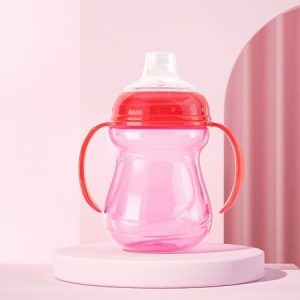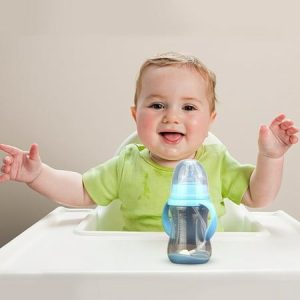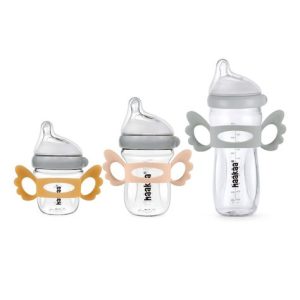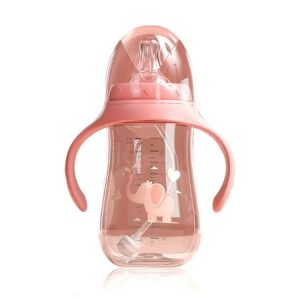Glass feeding bottles are a popular choice for parents looking for a safe and reliable way to feed their babies. There are many reasons why glass bottles might be a good option for you. This article will explore the benefits of glass feeding bottles, different types of glass bottles, and factors to consider when choosing a glass bottle for your baby.
Why Choose Glass Feeding Bottles?
Glass feeding bottles offer several advantages over other types of feeding bottles. Here are some key benefits:
-
Safety: Glass is a non-porous material, which means it doesn’t leach chemicals into breast milk or formula. This can be important for parents who are concerned about the potential health risks of other materials, such as bisphenol A (BPA).
-
Ease of cleaning: Glass bottles are generally easier to clean than plastic bottles. Glass doesn’t stain or absorb odors, and it can be sterilized in boiling water.
-
Durability: Glass bottles are more durable than plastic bottles and are less likely to crack or break. This can be a good option for parents who are looking for a bottle that will last for a long time.
-
Temperature control: Glass bottles heat and cool quickly and evenly, allowing you to easily check the temperature of your baby’s milk.
-
Natural look: Some parents prefer the look and feel of glass bottles, finding them more natural than plastic bottles.

Considering Your Needs
When deciding if a glass bottle is right for you, consider your lifestyle and needs. Here are some things to keep in mind:
Weight:
Glass bottles are heavier than plastic bottles. This may be a consideration if you plan to do a lot of bottle feeding outside the home.
Fragility:
While more durable than plastic, glass bottles can still break if dropped. This may be a concern for parents with clumsy toddlers.
Cost:
Glass bottles are typically more expensive than plastic bottles.
Types of Glass Feeding Bottles
Glass feeding bottles come in a variety of shapes, sizes, and styles. Here are some of the most common types:
-
Wide-neck bottles: These bottles have a wide opening, which makes them easier to fill and clean.
-
Narrow-neck bottles: These bottles have a narrower opening, which may be more comfortable for some babies to hold.
-
Angled bottles: These bottles are designed to help reduce air intake, which can help prevent gas and fussiness.
-
Bottles with silicone sleeves: These sleeves can help protect the glass bottle from breaking and make the bottle easier to grip.
Choosing the Right Glass Bottle for Your Baby
When choosing a glass bottle for your baby, consider the following factors:
-
Your baby’s age and size: Newborns will need a smaller bottle than older babies.
-
Your baby’s feeding style: Some babies prefer a slow-flow nipple, while others prefer a fast-flow nipple.
-
Your lifestyle: If you plan to do a lot of bottle feeding outside the home, you may want to choose a lighter bottle.
-
Your budget: Glass bottles typically cost more than plastic bottles.

Tips for Using Glass Feeding Bottles
Here are some tips for using glass feeding bottles safely and effectively:
-
Always inspect the bottle for cracks or chips before each use.
-
Wash the bottle and nipple thoroughly before each use.
-
Sterilize the bottle and nipple according to the manufacturer’s instructions.
-
Heat the bottle by placing it in warm water, not in the microwave.
-
Test the temperature of the milk before feeding your baby.
-
Never leave your baby unattended with a bottle.
Glass feeding bottles offer a safe, durable, and easy-to-clean option for feeding your baby. There are many different types of glass bottles available, so you can find one that meets your baby’s needs and your lifestyle. By considering the factors discussed in this article, you can choose the right glass bottle for your baby and ensure a happy and healthy feeding experience.
Making the Switch to Glass Bottles
If you’ve decided to switch to glass bottles, here are some additional things to keep in mind:
Warming glass bottles:
Glass heats evenly and quickly, so you only need to warm it briefly. Never heat a glass bottle in the microwave, as hot spots can develop.
Traveling with glass bottles:
Because glass is heavier and can break, you might consider packing a plastic bottle for travel or outings.
Making bottle-feeding a positive experience:
Regardless of the bottle material, creating a calm and loving feeding routine is important for your baby.
The Importance of Responsiveness
When feeding your baby, it’s important to be responsive to their cues. Here are some signs your baby might be full:
- Turning away from the bottle
- Pushing the bottle away
- Clenching their fists
- Fussing or crying
If your baby shows any of these signs, stop feeding them and offer cuddles or burp them.
Glass feeding bottles can be a safe and convenient way to feed your baby. By following the tips in this article, you can ensure a positive feeding experience for both you and your baby. Remember, the most important thing is to choose a feeding method that works best for you and your baby.
Eco-Friendly Considerations
Glass feeding bottles are an eco-friendly choice for parents concerned about the environmental impact of plastic.
-
Durability: Glass bottles can last for years with proper care, reducing waste compared to disposable plastic bottles.
-
Recyclability: Most glass can be recycled endlessly, reducing your reliance on new materials.
Finding the Perfect Bottle for You
The decision of whether to use glass bottles is ultimately a personal one. Here are some additional factors to consider:
-
Your lifestyle: If you’re constantly on the go, a lighter plastic bottle might be more convenient.
-
Your budget: Glass bottles typically cost more upfront than plastic bottles.
-
Your baby’s preferences: Some babies may prefer the feel of a glass bottle over plastic.
Conclusion
Glass feeding bottles offer a safe, eco-friendly, and easy-to-clean option for feeding your baby. They come in a variety of styles and sizes to suit your needs. By considering the factors discussed in this article, you can choose the best feeding bottle for you and your baby.
Remember, the most important thing is to find a feeding method that works well for both you and your baby.



